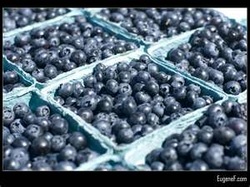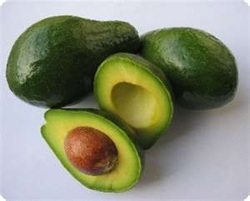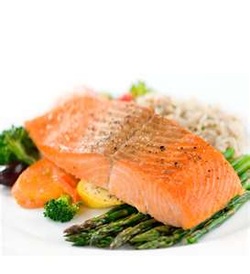SUPER FOODS - EVERYTHING YOU NEED TO KNOW
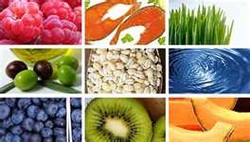
super foods are plants that have a high content of phytonutrients in them.
These supercharged nutrients keep you from getting degenerative diseases when eaten in abundance. They consist of fruits, vegetable, whole grains, and legumes. They help prevent diseases like hypertension, diabetes, cancer, heart disease. Studies have shown vegetarians to have a low incidence of these diseases due to their plant based diet.
Figs
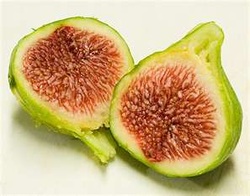
Figs are an excellent source of dietary fiber (almost 2 grams each!). They're also a good source of calcium and potassium.
Sprouts
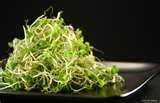
Sprouts are a concentrated source of enzymes . Additionally, due to their high enzyme content, sprouts are also much easier to digest than the seed or bean from which they came.
|
Peppers

All peppers contain compounds called capsaicinoids. They are anti-inflammatory, analgesic, anti-cancer, heart-healthy effects—from very high levels of capsaicinoids, the most common form of which is capsaicin. Chilies are high in antioxidant carotenes and flavonoids, and contain about twice the amount of vitamin C found in citrus fruits. Garlic
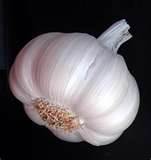
|
Sweet Potatoes

Sweet Potatoes contain phytonutrients that promote heart and eye health and boost immunity. They have beta-carotene (thought to lower breast cancer risk) and vitamin A (which may reduce the effects of smoking).
|
Cruciferous Vegetables
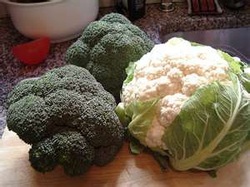
Cruciferous vegetables—cabbages, cauliflower, broccoli contain a powerful range of disease fighters. Sulforaphane, may increase enzymes that lower the incidence of colon and lung cancers
|
Dark, Leafy Greens
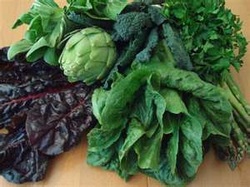
Dark, Leafy Greens Dark, leafy greens such as spinach, kale, and swiss chard are an excellent source of iron (especially important for women), vitamin A, and lutein for eye health. Best of all, you know those omega-3s everyone's talking about? They reside in dark greens (including seaweed, which is why they're concentrated in fish).
|
Beets

Beets are one of several disease-fighting phytonutrients found in this root vegetable. Beets are also a good source of folate, which guards against birth defects, colon cancer, and osteoporosis, and are high in fiber and beta-carotene.
|
Barley
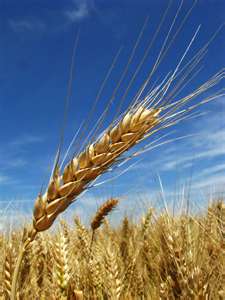
barley a low-glycemic grain, it is high in both soluble and insoluble fiber. Soluble fiber helps the body metabolize fats, cholesterol and carbohydrates, and lowers blood cholesterol levels. Insoluble fiber—commonly called "roughage"—promotes a healthy digestive tract and reduces the risk of cancers affecting it.
The fiber found in barley provides food for the beneficial bacteria in the large intestine. This is important as the "good" bacteria can crowd out the disease-causing bacteria in the intestinal tract, resulting in greater health and disease resistance. |
Green Foods
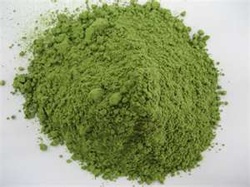
Green Foods are a group of foods that includes barley grass and wheat grass, as well a blue-green algae known as BGA. Nutritionally, they are close cousins to dark green leafy vegetables, but offer far greater levels of "nutrient density." In other words, an ounce of these concentrated green foods contains much more of the beneficial phytonutrients found in an ounce of green vegetables. Green foods have marked beneficial effects on cholesterol, blood pressure, immune response and cancer prevention. These effects are attributed in part to their high concentrations of chlorophyll.
|
Sardines
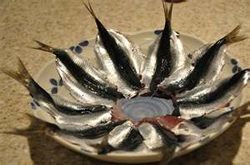
Sardines Wild-caught sardines are low in mercury (unlike some types of tuna) and high in vitamin D; a three-ounce serving has as much calcium as a cup of milk.
|
|
Flaxseed
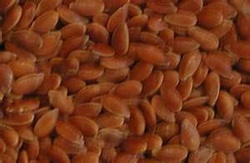
Flaxseed Omega-3 fatty acids they speed up cell metabolism and reduce inflammation in the body, reducing triglyceride levels and lowering blood pressure.
|
Sesame Seed
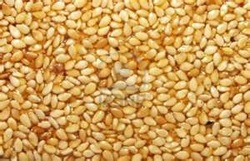
Sesame Seeds
Tiny, tasty sesame seeds contain unique lignans (or plant compounds),
including sesamin and sesamolin, which can help lower cholesterol. The seeds
are a good source of calcium, phosphorous, and zinc—as well as copper, which
research suggests may help maintain strong bones.
|
Walnuts
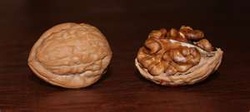
Walnuts are one of the best plant sources of protein. They are rich in fiber B vitamins, magnesium, and antioxidants such as Vitamin E. Nuts in general are also high in plant sterolsand fat - but mostly monounsaturated and polyunsaturated fats (omega 3 fatty acids in particular, alpha-linolenic acid ALA) that have been shown to lower LDL cholesterol. Walnuts, indeed, have significantly higher amounts of ALA omega 3 fatty acids compared to other nuts.
|
Seaweed

Seaweed (Hijiki, Wakame, Kelp, Nori) All have Omega-3's, Seaweeds contain nutrients commonly found in green leafy vegetables, along with most minerals found in the ocean. They're also full of magnesium, which may prevent migraines and asthma attacks.
|
Beans, Peas, & Lentils
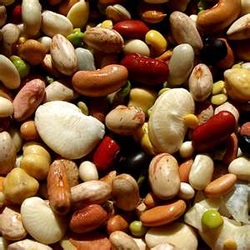
Beans, Peas and lentils are low in fat and calories and sodium but high in complex carbohydrates and dietary fiber, and they offer modest amounts of essential fatty acids—mostly omega-6s . They are also an excellent source of protein, needing only to be combined with grains such as barley or oats to provide all the amino acids necessary to make a complete protein for vegetarians who do not have other sources of protein for their meals.
Beans are extremely beneficial in an anti-diabetes diet because they rank low on the glycemic scale, which means that they do not cause the inflammatory, hunger-inducing spike in blood sugar levels associated with refined grains and baked goods. Beans offer ample fiber (one cup of cooked beans can provide as much as 15 grams of dietary fiber, more than half the recommended "daily value" of 25 grams and are released into the bloodstream slowly, providing energy and satiation for a sustained period. |
Probiotics

Probiotic microbes help the body's ongoing fight against infectious diseases by competing with the pathogens for food, nutrients and survival. This is why human breast milk is rich in nutritional factors that foster the growth of bifidobacteria—a beneficial bacterial family that keeps babies' intestinal ecosystems healthy and disease-resistant.
Researchers have found that people whose diet is rich in probiotics foods enjoy enhanced immune function. It appears that probiotics normalize immune responses, inhibit chronic subclinical inflammation and may improve inflammatory conditions with an autoimmune component, such as asthma, eczema and Crohn's disease. |
Yogurt
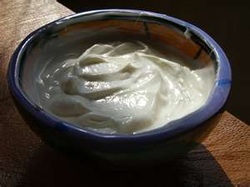
Yogurt helps Obesity
A 2003 study at the University of Tennessee placed 34 obese people on a low-calorie diet. Sixteen of them were given 400 to 500mg of calcium in the form of a daily supplement. The other 18 people ate a diet higher in calcium— 1,100mg per day—in the form of yogurt. After 12 weeks, both groups lost fat. The supplement-taking group had 6 pounds less fat, but the yogurt group lost about 10 pounds of fat. And, those who ate yogurt discovered that their waists shrank by more than an inch and a half. In comparison, the supplement-taking subjects lost only about a quarter of an inch in waist size. Finally, a whopping 60 percent of the yogurt eaters' weight loss was belly fat, while only 26 percent of the supplement group's loss was belly fat.
Belly fat which is visceral or intra-abdominal fat is linked to high cholesterol, high insulin, high triglycerides, high blood pressure and other problems. Visceral fat may also secrete more disease-linked inflammatory molecules than other types of fat.
The study also reported that in addition to helping the participants lose more weight, the group that ate yogurt was about twice as effective at maintaining lean muscle mass
Always buy organic yogurt and avoid yogurt that contains artificial ingredients,sugars or sweetened fruit.
A 2003 study at the University of Tennessee placed 34 obese people on a low-calorie diet. Sixteen of them were given 400 to 500mg of calcium in the form of a daily supplement. The other 18 people ate a diet higher in calcium— 1,100mg per day—in the form of yogurt. After 12 weeks, both groups lost fat. The supplement-taking group had 6 pounds less fat, but the yogurt group lost about 10 pounds of fat. And, those who ate yogurt discovered that their waists shrank by more than an inch and a half. In comparison, the supplement-taking subjects lost only about a quarter of an inch in waist size. Finally, a whopping 60 percent of the yogurt eaters' weight loss was belly fat, while only 26 percent of the supplement group's loss was belly fat.
Belly fat which is visceral or intra-abdominal fat is linked to high cholesterol, high insulin, high triglycerides, high blood pressure and other problems. Visceral fat may also secrete more disease-linked inflammatory molecules than other types of fat.
The study also reported that in addition to helping the participants lose more weight, the group that ate yogurt was about twice as effective at maintaining lean muscle mass
Always buy organic yogurt and avoid yogurt that contains artificial ingredients,sugars or sweetened fruit.


